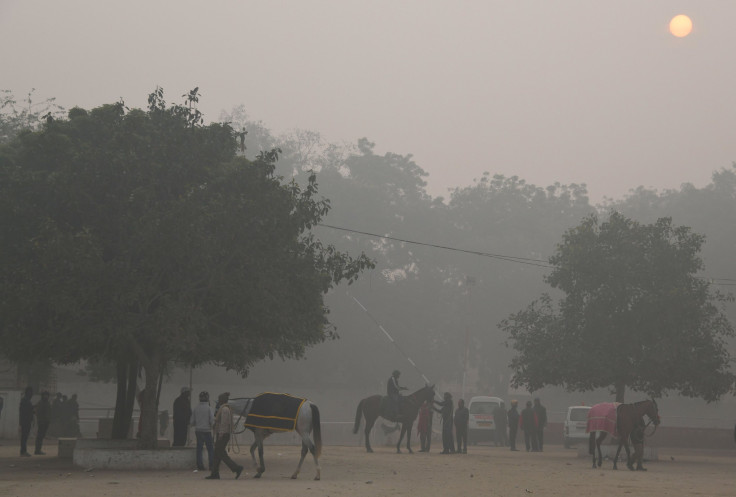WATCH: Anti-Smog Cannon Used To Curb Deadly Pollution In New Delhi

An anti-smog cannon was deployed in New Delhi, the capital city of India on Wednesday in a bid to decrease the pollution levels in the city.
In a video published on Youtube on Wednesday, one can see the cannon fitted to the back side of a truck spraying water in the air.
According to a report in the Times of India, the cannon sprayed atomised water up to 100 feet in the air to clear the pollution levels in front of the Inter State Bus Terminal Anand Vihar, New Delhi.
Cloud Tech, the manufacturer of the cannon stated that it is an emergency solution to the city’s growing quandary of massive levels of pollution.
The video also showed the director Cloud Tech, Vimal Sahni saying that the water from the cannon can bring immediate relief during the times when there is smog and there’s no sight of rain.
However, according to the report by The Times of India, after using the cannon, there was a slight blip in pollution levels for some time, after which it went back to its familiar high ratings throughout the day.
The report also stated that the cannon was being tested on a trial basis by the Delhi Pollution Control Committee (DPCC) and the environment department, in the presence of the environment minister Imran Hussain.
Hussain stated that a final decision will be taken after testing more of these machines.
According to DPCC officials, although a power connection was used to operate the cannon on Wednesday, a diesel generator will be required to use it when the truck will be in motion. As diesel generator sets are prohibited for use in New Delhi till March. 15, 2018, a DPCC official reportedly said, “We are looking at CNG sets too as a cleaner alternative, but it's difficult to get them.”
However, according to experts, such machines are not being perceived as long-term solutions. Executive Director of the Centre for Science and Environment, Anumita Roy Chowdhury reportedly said: “This can be an instant measure for local effect, especially if there are local gross dust generators. However, a more sustained and long-term measure is needed to bring systemic changes.”
According to a report by Indian Express in May 2014, an Indian news agency, a World Health Organization (WHO) study revealed that Delhi was the most polluted city in the world. In a 2014 report of the Ambient Air Pollution (AAP) database which contained the data of outdoor air pollution of numerous cities around the world, New Delhi had the highest concentration of PM2.5 of air pollution which is considered to be the most serious form of pollution which can result in respiratory diseases.
© Copyright IBTimes 2025. All rights reserved.






















